Medical Services

At the San Antonio Eye and Face Institute, we provide a comprehensive range of ophthalmic services tailored to meet the unique needs of each patient. Our medical expertise includes advanced treatments for cataracts, glaucoma, and dry eye, utilizing the latest technologies such as femto-second laser cataract surgery and minimally invasive glaucoma surgery (MIGS). In addition, we provide a wide range of cutting-edge therapies for dry eye syndrome. Our practice is dedicated to delivering personalized, top-quality medical care to improve the ocular and overall health of our patients.
Cataracts

What are Cataracts?
As we age, the natural lens of the eye gradually becomes cloudy. This cloudiness, known as a cataract, is a common condition that eventually affects everyone if they live long enough. Fortunately, cataract surgery offers a highly effective solution, as it can significantly improve vision and restore clarity.
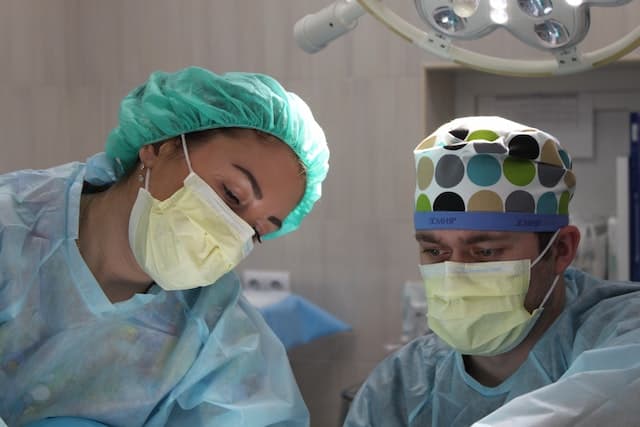
Laser Cataract Surgery
Femtosecond laser-assisted cataract surgery represents the latest advancement in cataract surgery techniques. In addition to its precision, this cutting-edge approach can help reduce astigmatism and deliver enhanced visual clarity, offering patients improved outcomes and sharper vision.

Premium IOLs
While cataract surgery significantly improves vision, it does not always eliminate the need for glasses. However, multifocal or extended depth of focus intraocular lenses (IOLs) offer a solution by providing better uncorrected vision at distance, intermediate, and near, giving patients greater visual freedom.

Cataract Anesthesia
General anesthesia is not typically used in cataract surgery. Instead, an anesthesiologist administers IV sedation to help the patient relax, while the ophthalmologist numbs the eye with a local anesthetic to ensure comfort during the procedure.

Second Opinions
Patients may sometimes have concerns or questions about their ophthalmologist's recommendations. At our practice, we regularly offer second opinions to help patients explore their cataract surgery options and make informed decisions about their care.
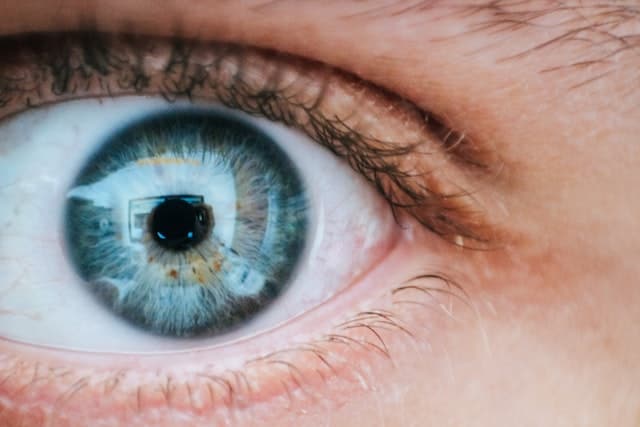
Laser Capsulotomy
After cataract surgery, vision may become blurry again if a cloudy film develops on the back of the artificial lens (IOL). Fortunately, a painless, in-office laser procedure can quickly and effectively remove this film, restoring clear vision.
Glaucoma

What is Glaucoma?
The optic nerve serves as the connection between the eye and the brain. Degeneration of this nerve leads to glaucoma, a serious eye condition. Elevated eye pressure is a significant risk factor for developing glaucoma. With timely treatment, irreversible blindness caused by glaucoma can be prevented.

Narrow Angles
Narrow angles can lead to closed-angle glaucoma; therefore, addressing narrow angles in a timely fashion is crucial. Laser iridotomy is an effective treatment for narrow angles, as it helps prevent angle closure. This procedure is performed in the office, takes only a few minutes, and has no downtime.
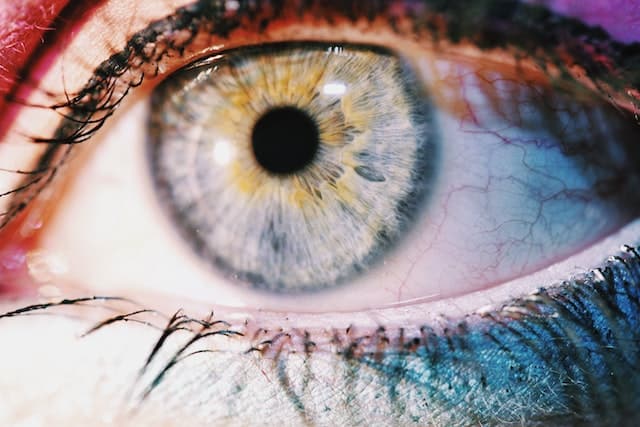
Laser Treatments
Glaucoma sometimes requires laser treatment to achieve a reduction in eye pressure. For this purpose, selective laser trabeculoplasty (SLT) can be an effective alternative to drops and micro-pulse diode cyclophotocoagulation can be an effective, non-invasive laser option for resistant glaucoma cases.

Goniotomy
Goniotomy is a minimally-invasive procedure used to treat glaucoma, often during cataract surgery, but sometimes as a stand alone procedure. A special instrument is used to open the drain inside the eye for two to three clock hours. This can improve fluid outflow and reduce intraocular pressure.

Microstents
There are multiple types of microstents available to reduce eye pressure in glaucoma, including the iStent, Hydrus, and Xen Gel stents. Each of these microstents offers a potential solution for managing eye pressure, making them a promising option to consider for effective glaucoma treatment.

Tube Shunts
Ahmed and Molteno valves are larger implant devices designed for glaucoma that is resistant to other forms of treatment. These valves have demonstrated excellent success rates, making them a reliable option for managing challenging cases of glaucoma that have not responded to drops, lasers, or microstents.
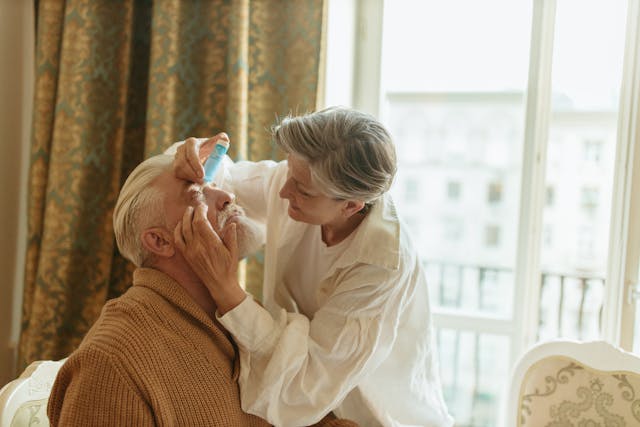
Glaucoma Drops
Glaucoma drops are medications designed to lower intraocular pressure to manage glaucoma. They work by either reducing the production of fluid in the eye or increasing its outflow. Daily use of drops is crucial for controlling eye pressure and preventing vision loss. While they are highly effective in most cases, they do come with some side effects that prevent long-term, consistent use.

Supplements
Nutritional supplements can play a supportive role in managing glaucoma. Supplements contain compounds believed to help protect the optic nerve. While they are not a replacement for prescribed medications or other treatments, they can complement a comprehensive glaucoma management plan. Consulting with an ophthalmologist before starting any supplements is recommended.

Marijuana & CBD
Marijuana and CBD have been explored for their potential role in treating glaucoma, primarily due to their ability to lower intraocular pressure. Some studies suggest that these substances may offer temporary IOP reduction, they are not considered a primary treatment option. Their effects are generally short-lived compared to conventional therapies, and their use can come with side effects and/or legal considerations
Dry Eye Syndrome

What is Dry Eye?
Dry eye syndrome occurs when the eyes do not produce enough tears or when the tears evaporate too quickly. This leads to discomfort and irritation. Symptoms often include a gritty sensation, redness, blurry vision, and excessive tearing as a reflex response to dryness. Treatment may involve lifestyle changes, artificial tears, or other interventions to restore moisture and alleviate symptoms.

Dry Eye Meds
Artificial tears can provide temporary relief by lubricating the eyes. Drugs, such as corticosteroids, cyclosporine, lifitegrast, or perfluorohexyloctane can help treat dry eye. In some cases, oral medications like doxycycline may be prescribed to decrease inflammation. Artificial tears and medications work for some, but many go on to require additional interventions to improve their symptoms.

Punctal Plugs
Punctal plugs are small devices inserted into the tear ducts to help retain moisture on the surface of the eye, thereby providing relief from dry eye symptoms. They are a non-invasive option, suitable for patients who do not respond well to other dry eye treatments. Depending on the patient's needs, punctal plugs can be temporary or permanent. Each type comes with its pluses and minuses.

Serum Tears
Serum tears are a specialized eye drop made from a patient's own blood. They are prepared by extracting and concentrating growth factors and nutrients from the blood. Serum tears can provide significant relief by promoting healing and reducing inflammation in the eyes. This treatment is typically recommended for patients with severe dry eye who have not found relief with conventional therapies.

Nasal Spray
Nasal sprays for dry eyes are a less common but emerging treatment designed to address the root causes of dry eye syndrome. They work by targeting the nasal mucosa to stimulate tear production. These sprays can help improve overall eye comfort, particularly in patients with insufficient tear production. They are often used in conjunction with other treatments to provide relief from dry eye symptoms.
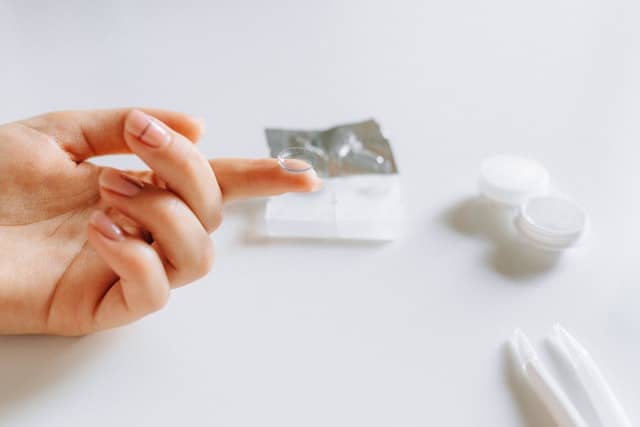
Amniotic Membrane
Amniotic membrane is a thin, biologically active disc derived from the placenta that is applied to the ocular surface. This membrane contains growth factors and anti-inflammatory properties that promote healing and reduce inflammation. The use of amniotic membranes can help restore the eye's natural protective barrier and support the regeneration of damaged tissues.

MG Dysfunction (MGD)
Meibomian gland dysfunction (MGD) occurs when the meibomian glands, located in the eyelids, become blocked or inflamed, leading to inadequate oil production for the tears. This condition often results in dry, irritated eyes and can cause discomfort and blurry vision. MGD is a common cause of chronic dry eye and may be managed through at-home treatments such as warm compresses, eyelid massages, and MGD artificial tears.

MG Thermal Tx
Meibomian gland thermal treatment is an in-office procedure designed to alleviate meibomian gland dysfunction by applying controlled heat (110 degrees) to the eyelids. The glands are then compressed with special forceps to expel the thickened oils that block the glands. This restores proper oil flow to the tears. Regular sessions every 6 months or yearly may be recommended for sustained relief and better gland function.

Styes & Chalazions
Styes and chalazions are common eyelid conditions. A stye is an acute infection of a hair follicle on the eyelid, usually resulting in a red, painful, and swollen lump. In contrast, a chalazion is a chronic inflammation or blockage of a meibomian gland leading to a firm bump on the eyelid. Styes may resolve with warm compresses and antibiotics Chalazions might require more persistent treatment, including minor surgery.
Other Conditions

Floaters
Floaters are shadowy shapes that drift through a person's field of vision caused by tiny particles within the vitreous gel of the eye. Most floaters are harmless and don't require treatment, but they can be bothersome. An advanced laser treatment can be used to reduce symptoms by lasering the particles. This procedure is considered when floaters impact quality of life. Results can vary and treatments are not covered by insurance.

Diabetic Eye Disease
Diabetic eye disease includes diabetic retinopathy and diabetic macular edema. High blood sugar levels can damage the blood vessels in the retina, leading to vision problems and potential blindness if left untreated. Regular eye exams are crucial for early detection. Treatment options may include laser therapy, medications, or surgery, depending on the severity and specific type of diabetic eye disease.

Macular Degeneration
Macular degeneration is an eye condition that affects the macula, the central part of the retina responsible for sharp, detailed vision. Reading and recognizing faces can become challenging. There are two main types: dry and wet AMD. Wet AMD can cause rapid vision loss due to abnormal blood vessel growth. Early detection, AREDS2 vitamins, and medical therapies, can help slow the progression of the disease.

Eye Allergies
Eye allergies occur when the eyes react to allergens such as pollen, dust, mold, or pet dander. This leads to itching, redness, and watery discharge. Allergens cycle year-round in San Antonio. Treatment typically involves avoiding known allergens, using antihistamine or barrier eye drops, and maintaining good eye hygiene to relieve symptoms and prevent further irritation.

Infections & Injury
Eye infections can result from bacterial, viral, or fungal pathogens and often lead to redness, discharge, and discomfort. Injuries to the eye can cause pain, vision changes, and potential damage to ocular structures. Prompt medical evaluation and treatment are essential to address both infections and injuries. Severe chemical or penetrating injuries need to be seen at a trauma center like UT Health.

Sports Eye Injuries
Sports eye injuries can occur from impacts, projectiles, or accidents during physical activities. Pain, vision changes, or even damage to the eye's structures can occur. Common sports-related eye injuries include corneal abrasions, hyphema (bleeding in the eye), retinal detachment, and foreign bodies lodged in the cornea. Protective eyewear can prevent injury during sports activities.

Blepharitis
Blepharitis is an inflammation of the eyelids that cause symptoms like redness, irritation, itching, and crusting of the eyelids. While not usually serious, blepharitis can be a chronic condition that requires consistent eyelid hygiene and, in some cases, medical treatment to manage symptoms.
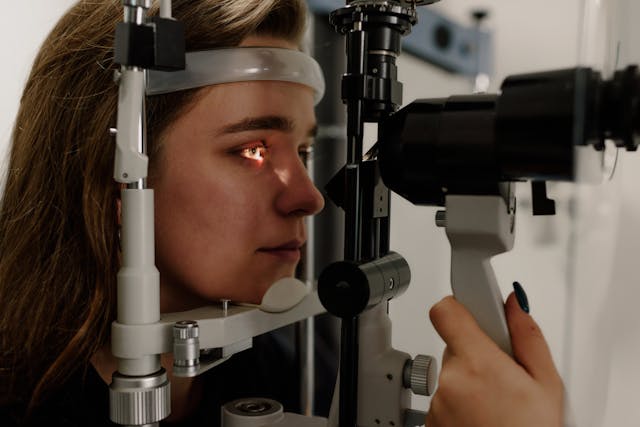
Plaquenil
Plaquenil (hydroxychloroquine) is a medication commonly used to treat autoimmune conditions. Long-term use can lead to retinal toxicity, potentially causing vision loss if not detected early. Regular eye exams, including retinal scans and visual field tests, are essential to protect your vision.
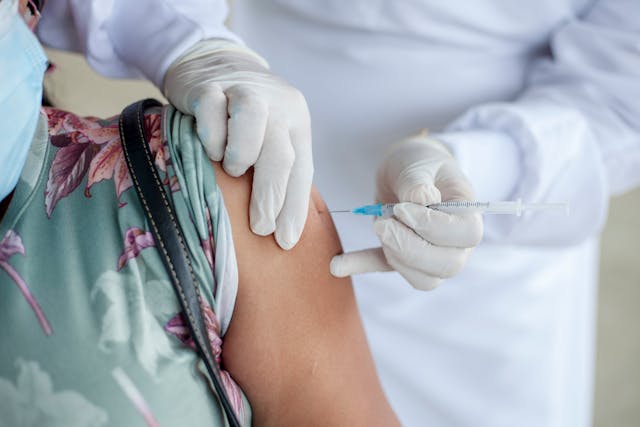
Steroids
Corticosteroids can increase the risk of developing eye conditions such as cataracts and glaucoma. Steroid injections or nasal sprays can raise intraocular pressure, leading to optic nerve damage. This can happen without any symptoms so eye check-ups are important for patients using corticosteroids.
